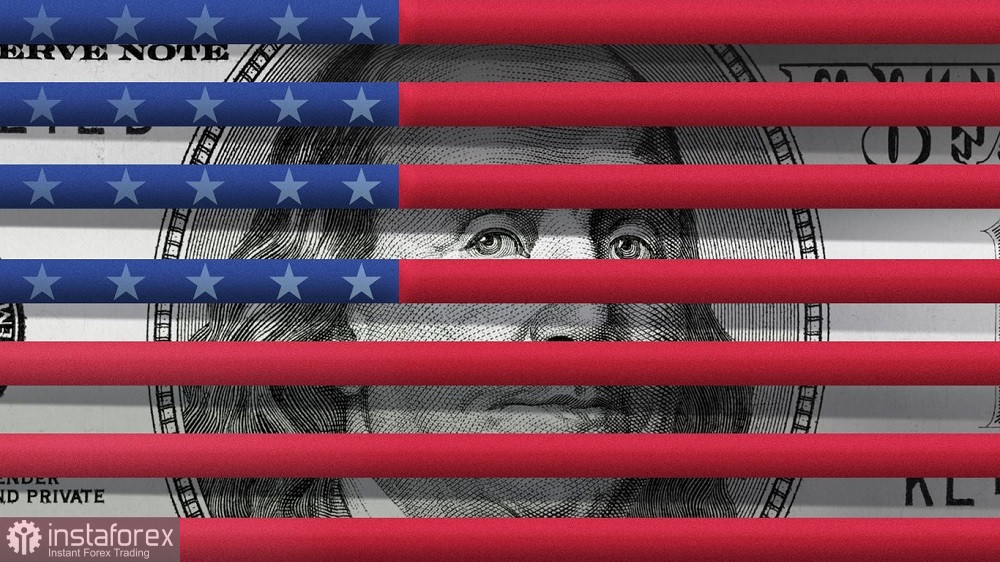This week's economic calendar is rich with significant events for the EUR/USD pair. Key releases include Germany's and the Eurozone's CPI, the ISM Services PMI, the minutes from the Fed's December meeting, and the U.S. labor market report. Additionally, traders are likely to react to other fundamental factors indirectly influencing the markets. These include an approaching winter storm in the U.S. and a surge in HMPV infections in China.

In other words, the upcoming week will be interesting, informative, and volatile. Sellers of EUR/USD are just 300 pips away from parity. If "the stars align," with increased risk-off sentiment and a strong U.S. labor market report, bears could target the symbolic 1.0000 level for the first time since November 2022.
Euro Awaits CPI
In her latest public appearance after the European Central Bank's December meeting, ECB President Christine Lagarde stated that the central bank would continue lowering interest rates in 2025. However, the pace of monetary easing will depend on incoming data. Most economists polled by Reuters and Bloomberg anticipate four 25-basis-point rate cuts from the ECB this year. However, there's a caveat: the Eurozone's overall Consumer Price Index (CPI) has been accelerating for the past two months, contrary to Lagarde's assertion that the ECB is nearing its inflation target. If December's CPI also shows a positive trend, signs of sustained inflation growth could emerge.
The Eurozone CPI report is scheduled for release on Tuesday, January 7. Preliminary forecasts suggest that the headline CPI will rise to 2.4%—the highest since July. Meanwhile, the core CPI, which has remained at 2.7% for three months, is expected to stay unchanged. This combination of rising overall inflation and stagnant core inflation may prompt EUR/USD buyers to organize a corrective rebound, offering a potential opportunity for short positions.
A day before the Eurozone inflation data, Germany will release its own CPI report. German and Eurozone CPI figures typically correlate, so the outcome of Germany's report may influence the euro and, consequently, EUR/USD.
USD Focus: Nonfarm Payrolls, Winter Storm, and Worrying News from China
The most critical U.S. macroeconomic report of the week for the U.S. dollar will be Friday's Nonfarm Payrolls (NFP). Forecasts suggest that December's unemployment rate will remain at 4.2%, while nonfarm employment is expected to increase by 155,000. Average hourly earnings are projected to rise by 4.0%, unchanged from the previous month. The dollar could receive significant support if the job growth exceeds 200,000, wage growth remains at 4% or higher, and unemployment drops to 4.1% or lower.
Other U.S. labor market reports will provide early indicators before Friday's NFP. On Tuesday (January 7), the JOLTS report will reveal the number of job openings, while Wednesday (January 8) will feature the ADP employment report.
Additionally, the ISM Services PMI, scheduled for January 7, could trigger volatility for the pair. The index is expected to rise to 53.2 points, continuing positive momentum after last week's manufacturing ISM report, which, while still below 50, came in better than expected.
Traders should also pay attention to the Fed's December meeting minutes, which will be released on Wednesday, January 8. The updated dot plot from this meeting showed that most FOMC members expect only two 25-basis-point rate cuts in 2025, compared to the 100-basis-point cut anticipated at the September meeting. The Fed minutes will likely strike a hawkish tone, supporting the dollar.
Weather + HMPV
Other fundamental factors could also influence dollar pairs. For example, a winter storm is set to impact 26 U.S. states next week, potentially affecting 60 million people. NOAA's Weather Prediction Center has warned that this could be the most severe snowfall in over a decade for regions like Kansas, Missouri, Illinois, and Indiana. The storm may cause widespread power outages. It's worth noting that last October's NFP was significantly impacted by hurricanes Milton and Helen, which disrupted the labor market. The U.S. Bureau of Labor Statistics classifies workers unable to work due to weather conditions as "temporarily unemployed due to external factors."
There is concerning news coming from China regarding an increase in cases of the human metapneumovirus (HMPV), as reported by the National Disease Control and Prevention Administration. It's important to clarify that HMPV is not a new type of COVID-19 or a new virus; it was first discovered by a group of Dutch researchers in 2001. This year, reports about a significant rise in HMPV cases in China this season have drawn media attention, especially as hospital intensive care units are filling up with infected patients. Additionally, a report from the Taiwanese publication Money UDN states that the mortality rate associated with HMPV approaches 40%, and currently, only supportive therapy can be provided since there are no antiviral drugs available to treat this virus.
In my opinion, there seems to be unnecessary panic being stirred up regarding the outbreak of metapneumovirus in China, whether intentionally or not. Currently, there are no objective reasons to claim that this outbreak will develop into a new pandemic. However, sensational newspaper headlines about a "new apocalypse" could contribute to increased anxiety about potential risks. In this scenario, the dollar may emerge as a preferred protective asset.
Conclusions
By the end of the week, EUR/USD could approach parity if Eurozone inflation slows and U.S. labor market data remains robust. Increased risk-off sentiment could also play a role. Overall, the fundamental backdrop favors further price declines. Thus, corrective pullbacks should be seen as opportunities to open short positions targeting 1.0270 (the lower Bollinger Bands line on D1) and 1.0220 (the lower Bollinger Bands line on W1).





















